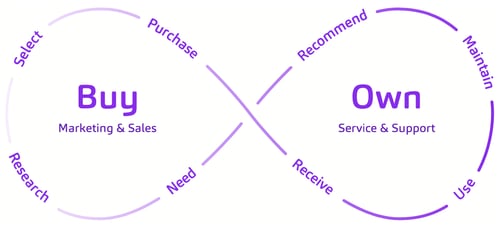The Top 5 CEM Pitfalls and How to Avoid Them
 Stijn Wessels
Stijn Wessels

Customers are among your most valuable capital. Yet executing a solid customer experience strategy is challenging. So, why not take time to discuss four common pitfalls of CEM (Customer Experience Management) and how to avoid them.
1. Seeing CEM as a 'fun' marketing ploy
When you want your customer to be king, CEM cannot be a ‘fun’ side project. You need to embed it in all your organization’s thinking and processes.
Many organizations find that CEM is directly linked to their bottom-line results. But delivering the best customer experience isn’t so simple. When your customers, for example, are provided with personalized mail, that’s great. But when they get lost during the ordering process or frustrated during service, your CEM breaks down fast.
Customer experience evolves around all phases of the customer lifecycle. So, it touches upon all aspects of your business at every level. Starting with trials and tests is fine, but don’t treat CEM as a gimmick or you’ll miss out on some great opportunities.

2. Your operations are not set up to put customers at its heart
Most organizations are structured in silos. This means there are teams for different channels or products, or that different departments perform tasks on their own islands. In such a siloed organization, data is fragmented, too.
A common pitfall is building additional processes and structures around these silos. Although this might serve as a quick fix, it won’t put the customer at the heart of your CEM strategy in the long run. How can you be scalable regarding relevant interactions when data is scattered throughout your organization?
Getting operations ready for customer-centricity means bridging the silos across all facets of your business.
3. There is no CEM software
For a solid customer experience strategy, you need to collect and process data from all parts of the customer journey and distribute your content or message via any given channel. Since there’s hardly any off-the-shelf technology to support this endeavor end-to-end, it’s not an easy task.
You should focus on bridging the gaps between the systems powering your digital channels and the business applications that process back-office information. With powerful applications designed for transitioning data from one silo to another, such as an omnichannel Customer Data Platform (CDP) or an agile CMS, you can connect the dots. It’s a much more effective strategy than expecting one of your existing systems to do it all or searching endlessly for a complete one-stop-shop omnichannel CEM solution that just doesn’t exist.
4. The continuous transition
Customer behavior changes continuously, as does the customer journey—from multichannel to cross-channel to omnichannel. Most marketers manage omnichannel with an inside-out approach, focusing on technology and connecting with customers at several touchpoints across all channels. But as we transition to omnichannel strategies, the next best thing is already on its way: the multi-experience strategy. Multi-experience is not limited to interaction modalities such as a keyboard, mouse, and touch; it goes beyond them to include chat, voice, vision, pointing, gesture, and motion.
We suggest you stop thinking in terms of transitions and instead start working on continuous adaptability or a more agile approach. That way, you prepare yourself for what’s coming, whether it’s multi-experience, the next consumer trend, or an as-of-yet invented future innovative device. An adaptable approach is much more future-proof because it evolves as customer expectations and behavior evolve.
5. The 'too many apps' paradox
Organizations run one or more applications for each channel, and the number of channels continues to grow. This has resulted in a proliferation of systems that are all useful and contribute to Customer Experience Management. However, the sheer extent of them makes it difficult to optimize the customer experience as a whole, as all these disparate systems require their own content, data, and processes.
In addition, nearly every single system is starting to claim a centralized role in managing data, content, or processing information for other channels and systems. This results in chaos, with everyone claiming his or her content or data is the single source of truth while, in fact, none of these systems has the capability to provide others with the right stuff.
That’s why we recommend solving this hierarchy issue by splitting the channel systems (silos) from the omnichannel hubs and implementing the omnichannel tools you need to empower your existing tools. Consider a CDP for your omnichannel data or an agile CMS to craft and provide content to the systems that need it. That way you won’t have to replace any of them when the fight over the omnichannel source of truth ends.



